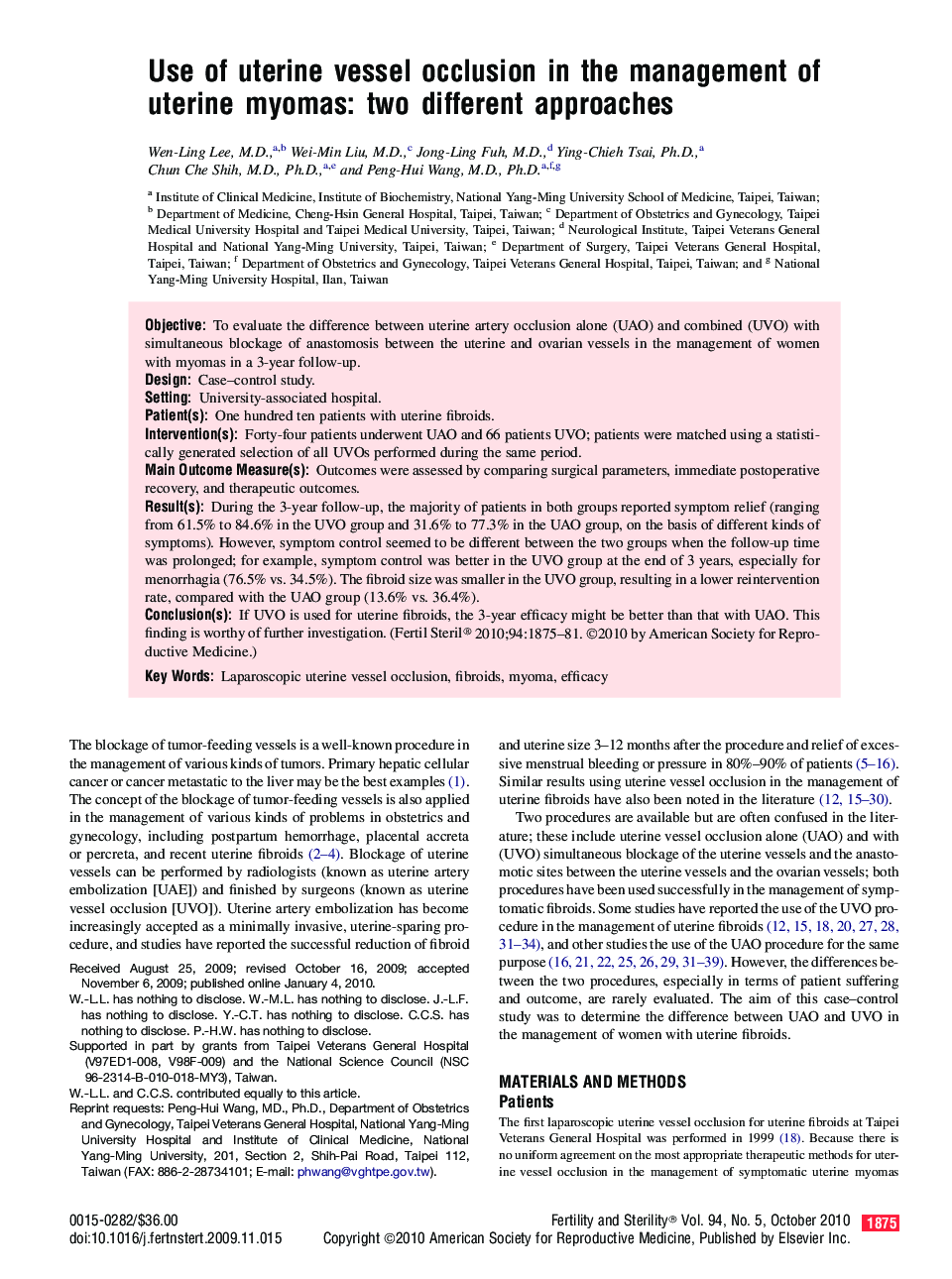| Article ID | Journal | Published Year | Pages | File Type |
|---|---|---|---|---|
| 3940514 | Fertility and Sterility | 2010 | 7 Pages |
ObjectiveTo evaluate the difference between uterine artery occlusion alone (UAO) and combined (UVO) with simultaneous blockage of anastomosis between the uterine and ovarian vessels in the management of women with myomas in a 3-year follow-up.DesignCase–control study.SettingUniversity-associated hospital.Patient(s)One hundred ten patients with uterine fibroids.Intervention(s)Forty-four patients underwent UAO and 66 patients UVO; patients were matched using a statistically generated selection of all UVOs performed during the same period.Main Outcome Measure(s)Outcomes were assessed by comparing surgical parameters, immediate postoperative recovery, and therapeutic outcomes.Result(s)During the 3-year follow-up, the majority of patients in both groups reported symptom relief (ranging from 61.5% to 84.6% in the UVO group and 31.6% to 77.3% in the UAO group, on the basis of different kinds of symptoms). However, symptom control seemed to be different between the two groups when the follow-up time was prolonged; for example, symptom control was better in the UVO group at the end of 3 years, especially for menorrhagia (76.5% vs. 34.5%). The fibroid size was smaller in the UVO group, resulting in a lower reintervention rate, compared with the UAO group (13.6% vs. 36.4%).Conclusion(s)If UVO is used for uterine fibroids, the 3-year efficacy might be better than that with UAO. This finding is worthy of further investigation.
